Thyme: characterization, cultivation and pest control
Thyme in the common people is called the Mother of God herb. This plant belongs to the category of semi-shrubs.
Content:
- Description of the plant
- Breeding and harvesting thyme
- Soil preparation
- Thyme care
- Diseases and pests of thyme
Description of the plant
Thyme is characterized by the presence of small turf trees. The stem of the thyme is able to spread on the ground, which leads to its rooting. The lower part of the stem is characterized by woodiness, and the upper part is branched. The stem of this plant has leafy flowering branches in large quantities.
The leaves of this plant are characterized by an opposite, oval or ovoid shape. The foliage size of this plant is small. The thyme glands, which are located on the leaves, contain essential oil. This plant is characterized by the presence of very small flowers that gather at the tips of the branches.
The flowers of this plant are characterized by purple or pink color.
They also have a pronounced and pleasant aroma. This plant begins to bloom in May and ends in September. At the end of flowering, fruits appear on the thyme. After ripening, they break down into four roots. The herb of this plant is characterized by pungency and bitter taste. Thyme can grow in height from 20 to 40 centimeters.
Breeding and harvesting thyme
This plant can be propagated in two ways:
- Seeds
- Cuttings
Propagation using seeds:
- The seeds of this plant are planted in late March or early April.
- Initially, thyme seeds are planted on seedlings in wooden boxes or plastic containers.
- You can germinate seeds in a greenhouse or at home. In this case, the temperature in the room should be about 20 degrees.
- Planting seedlings in open ground produced at the end of May.
- Thyme must be planted in rows. The distance between plants should be at least 20 centimeters, and between rows - about 35 centimeters.
- Planting the seeds of this plant can be done directly into the ground. Seeds are sown in early spring (late March - early April).
- Seeds are planted at the rate of 0.7 grams per square meter.
- The depth of planting seeds is half a centimeter. The first shoots of this plant appear in 20-25 days.
- Thinning of seedlings is carried out after the appearance of the first leaves. In this case, it is necessary to leave a distance of 15-20 centimeters between the plants.
Thyme grows very slowly initially, which is a concern for many gardeners. But there is no need to worry, just this plant needs to be provided with proper and regular care.
Harvesting of this plant begins in June. It is during this period that the peak of thyme flowering occurs.
Plants with flowers are cut at a level of five centimeters from the ground. For this purpose, you can use ordinary scissors or a knife. Harvesting of raw thyme is also done in late July or early August. To obtain the essential oil, the cut grass is processed.
If, after planting thyme, you received a low harvest in the first year, do not be upset. This plant has a very low yield in the first year after planting.In subsequent years, the percentage of the harvest increases significantly. If three years pass after the planting of this plant, then its yield will begin to slowly decline. This requires a new planting of seeds or division of the bushes.
Soil preparation
Before planting seeds on the site, it is necessary to properly prepare the soil. All previous crops are removed from the site. Next, you need to plow the soil to a depth of at least 30 centimeters. In the event that the soil is prepared in the autumn period, then it must not only be plowed, but also harrowed. This will get rid of weeds and also retain moisture. If the harrow is carried out in the spring, then this action must be performed in two directions.
Preparing the soil for planting this plant also consists in applying fertilizers:
- Thyme is very fond of organic fertilizers in the form of manure or humus.
- Fertilization must be done long before planting the plant, namely, when preparing the soil.
- In order to significantly increase the yield of thyme, it is necessary to apply mineral fertilizers in the form of ammonium sulfate, ammonium nitrate, potassium salt, superphosphate.
- These fertilizers are applied for the main plowing.
- Thyme seedlings also require fertilizing. This action must be performed twice per season.
Thyme is not a very demanding crop, but after planting the seedlings, it must be carefully cared for. After planting the plant, an active weed control is immediately carried out, which consists in loosening the row spacings.
Thyme care
In order to ensure the full growth and development of this plant, and also increase yields it is necessary to provide him with full care. Growing thyme is easy. To do this, you just need to strictly adhere to the rules of its cultivation.
In order to ensure the rapid growth and development of this plant, it is necessary to plant it in sunny places.
Otherwise, the thyme will grow very poorly and may not bloom at all. This plant does not tolerate acidic soils at all, so it will be inappropriate to plant it in such soil. Thyme grows very well on neutral fertile soils, which are characterized by a medium to light texture.
Thyme is very fond of warmth. To accelerate the process of seed germination, it is necessary to plant them in warm soil and in sunny weather. In this case, the soil moisture should be high enough. After the plant has rooted, it is necessary to limit the amount of moisture, since they do not like it very much. With a lack of heat, this plant will grow and develop rather slowly, and this will lead to a small amount of essential oil.
When a plant is planted in cold climates, it will not be able to survive the winter. Therefore, in such climatic conditions, thyme is grown as an annual plant. When planting thyme in a warm climate, it is left for the second year. Only for the winter, this plant must be spud and covered. Snow can be used as a shelter for this plant in winter. If there is no snow, then it is replaced by fallen leaves of trees.
Cultivation of thyme in the same place takes no more than 3-4 years.
During this period, these plants have a large amount of essential oil, as well as other valuable substances. After this time, this plant becomes less valuable. Thyme is able to tolerate drought very well, but still needs to ensure timely watering to improve its growth.
Watering the plant:
- In order to increase the yield of thyme, it is necessary water regularly and abundantly from early spring to late autumn.
- But at the same time, you should not overdo it.
- The thyme should receive the optimum amount of moisture at all times.This will make the herb fragrant and contain a lot of essential oils.
When picking the thyme herb, never pick it off with your hands. This is because the roots of this plant are very easily pulled from the ground. Plucking thyme with your hands can disrupt the root system. Raw thyme must be very thoroughly dried in a well-ventilated room. To do this, you need to divide the grass into small bunches and hang it in a room where direct sunlight hits me.
Diseases and pests of thyme
Thyme is a fairly resistant plant that practically does not suffer from a variety of pests and diseases. This is due to the fact that this plant has a large amount of fragrant substances.
With improper agricultural technology, this plant can be affected by such pests as:
- Meadow moth
- Sandy slow
- Aphid
- Weevil
The meadow moth is a rather dangerous pest. The butterflies of this pest are active on warm nights and infect the stems and leaves of this plant. At the first signs of damage to thyme by this insect, it is necessary to treat it with insecticides.
A sandy slow beetle is called a black beetle, which has dimensions from 7 to 10 millimeters. This pest affects the ground part of the plant. To combat it, the method of poisoned baits is used.
Aphids belong to the category of small and sedentary insects that infect the leaves and stems of thyme.
At the first signs of the appearance of this pest, it is necessary to treat the plant with insecticides that are harmless to human health. The methods of dealing with the weevil are the same as with the sandy sludge.
As for diseases, thyme can only be affected by fungal diseases or rust, and only with improper plant care. To add value thyme must be properly cared for.
More information can be found in the video.



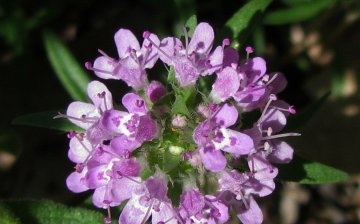
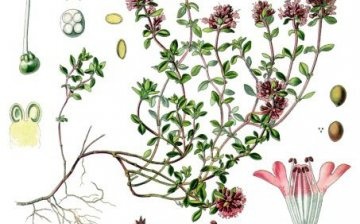

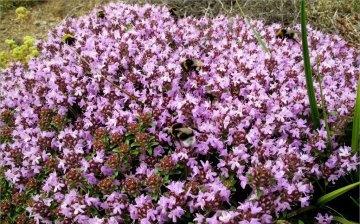
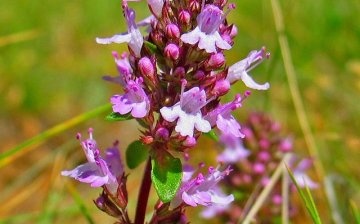
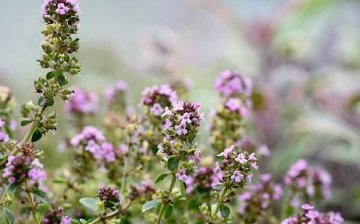






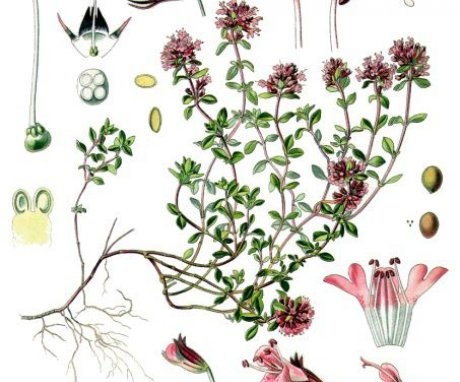


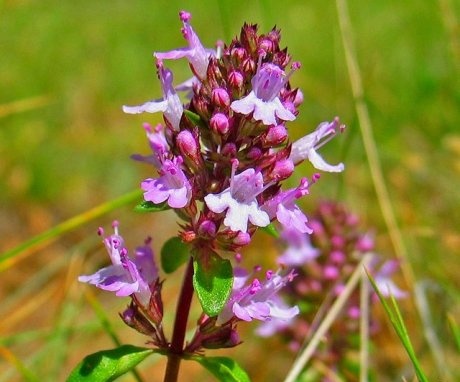
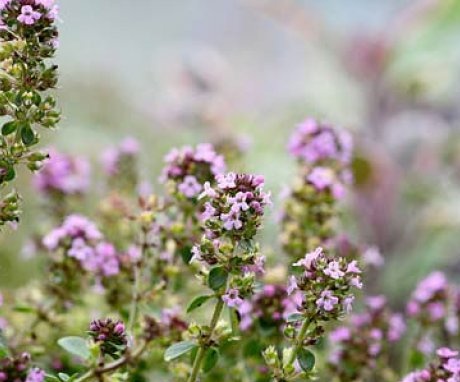
My mother and I decided to reorient the country landings, and plant, incl. thyme. Tell me, does he have a preference for soils? Will it be able to grow in sandy soils with an average abundance of fertilizer?